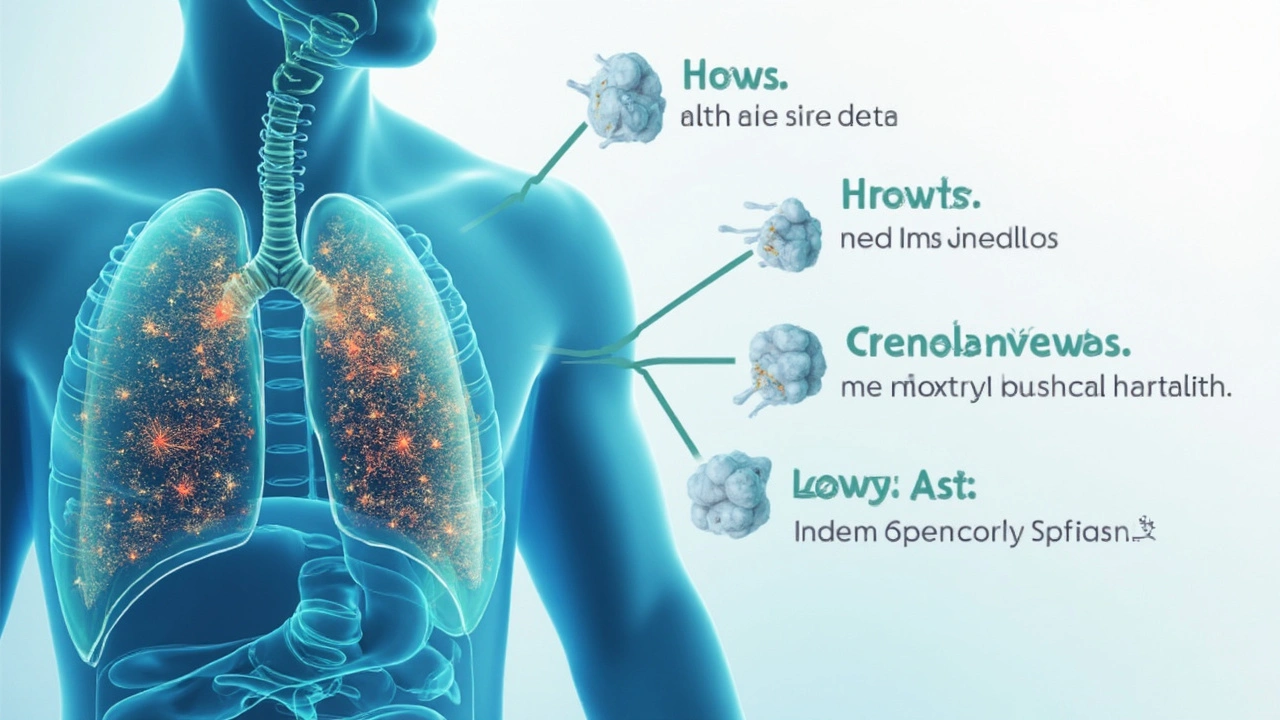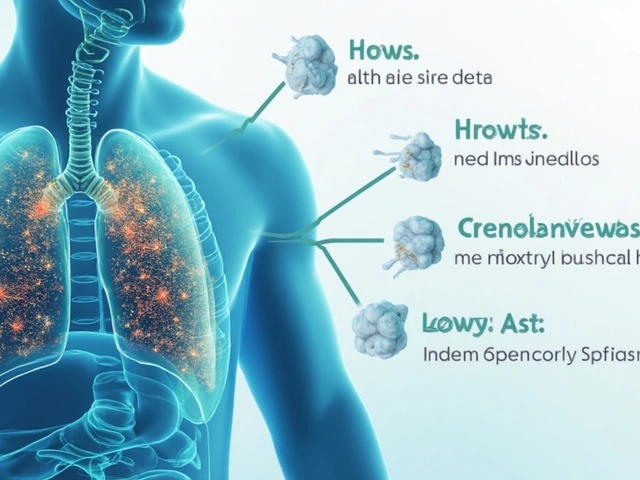Montelukast – What It Is and Who Can Benefit
If you’ve been prescribed a pill called montelukast, you probably have asthma, allergic rhinitis, or both. It’s a once‑daily tablet that helps keep the airways open and reduces sneezing, runny nose, and wheezing. Many people start it after a doctor notices that inhalers alone aren’t enough, or when allergy symptoms flare up during certain seasons.
How Montelukast Works
Montelukast belongs to a class called leukotriene receptor antagonists. Think of leukotrienes as tiny chemicals released by your body during an allergic reaction – they tighten the muscles around your airways and cause inflammation. Montelukast blocks those chemicals, so the muscles stay relaxed and the lining of the lungs stays less swollen. Because it works on a different pathway than inhaled steroids, it can be a good add‑on for people who still have symptoms despite using their regular inhaler.
The drug is taken orally, usually in the evening. The timing isn’t critical for the medication to work, but many doctors recommend night‑time dosing because it fits into the routine and may help with night‑time asthma attacks.
Key Things to Know Before You Start
Dosage basics: Adults and kids 12 years and older usually take a 10 mg tablet. Younger children get a smaller chewable or granule dose (4 mg for ages 2‑5, 5 mg for ages 6‑14). Never double up if you miss a dose – just take the next one at your usual time.
Common side effects: Most people feel fine, but a few report headache, stomach upset, or a mild rash. If you notice mood changes, agitation, or depression, call your doctor right away – rare cases link montelukast to these symptoms.
Drug interactions: Montelukast doesn’t clash with most medicines, but tell your pharmacist if you’re on phenobarbital, rifampin, or certain anti‑HIV drugs, as they can lower montelukast levels.
Pregnancy and breastfeeding: The drug is generally considered safe, but always confirm with your obstetrician before starting.
Buying safely: If you need a refill, use a reputable pharmacy – look for a licensed Canadian or U.S. online pharmacy with a physical address and a pharmacist available for questions. Avoid sites that promise “no prescription needed” for montelukast.
Montelukast isn’t a rescue inhaler. Keep your short‑acting bronchodilator handy for sudden breathing trouble. Use montelukast as a daily controller, not an emergency fix.
Finally, track your symptoms. Write down when you feel better, any side effects, and how often you need rescue inhaler puffs. This record helps your doctor decide whether the dose is right or if a different therapy might work better.
In short, montelukast can be a simple, effective tool for many who struggle with asthma or allergy symptoms. Follow the dosing schedule, watch for unusual feelings, and stay in touch with your healthcare team. With the right approach, you’ll likely notice fewer night‑time attacks and a calmer allergy season.
6 June 2025
Tessa Marley
Wondering what Singulair is really doing in your body? This deep dive uncovers how Singulair (montelukast) works, its benefits for asthma and allergies, the surprising side effects you don't hear enough about, and the key conversations to have with your doctor before starting. Get the plain facts and practical tips on safer use.
Continue Reading...






